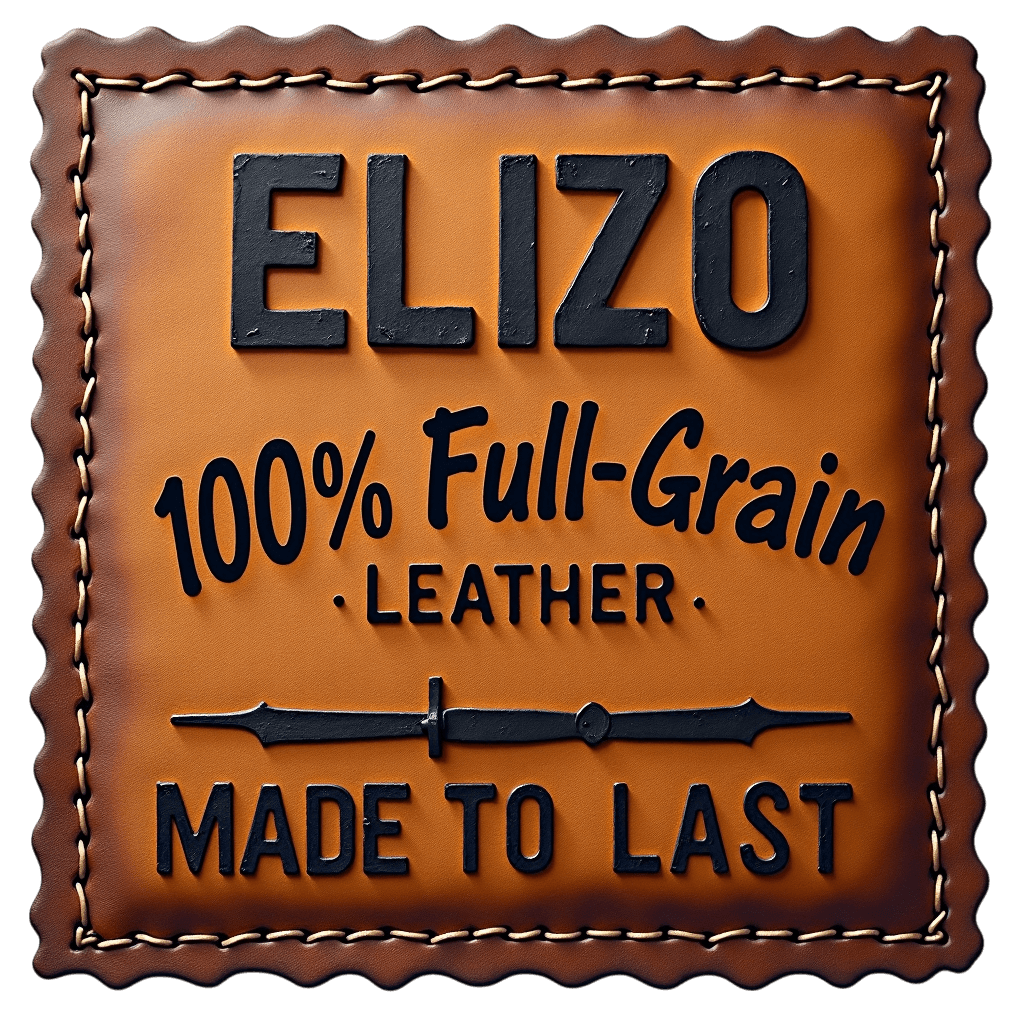Tanned Leather Bag: What Is It & How Is It Made?
The tanned leather bag is a bag or purse made from leather, a natural material from animal skin or hide. Vegetable tanned leather makes the best bags with its classic style and minimalist look as well as its sturdy and long-lasting qualities.
Everyone has at least one leather bag in their possession. If you don’t own one already, then you’re probably here because you’re thinking of getting one. And we congratulate you on your excellent decision!
The Leather Tanning Process
Any tanned leather bag starts with tanning animal hides. Tanning is a process that dates back thousands of years when ancient civilizations figured out a way to make clothes from the skin or hides of the animals they hunted for food.
Our ancestors, primitive as they are, developed a technology that takes a food waste material and turns it into a superior quality textile that is supple, smooth, and durable. This textile came to be known as leather, a versatile material that is resistant to wear and decay.
Producing vegetable tanned leather requires weeks, even months, of skilled labor with a process that can vary from one tannery to the next. Every tannery worker or artisan follows their own unique method to ensure the best tanned products. Every method may differ, but all follow a general series of processes, as explained below.
Pre-Tanning Process
Tanneries take several steps to prepare the animal skin to be tanned. The pre-tanning process involves fleshing, curing, wet-salting, soaking, de-hairing, liming, etc. Different tanneries may employ several pre-tanning steps, but they all aim to remove hair, flesh, grease, bacteria, and other unwanted parts of the animal skin.
Tanning Process
At this stage, the prepared skin or hides are treated to turn them into leather. The traditional treatment uses tannin-rich barks from trees like oak, mimosa, chestnut, quebracho, hemlock, birch, etc. Nowadays, tanneries use powdered tannin extracts from plants for convenience.
This traditional use of barks and other plant parts is called vegetable tanning. It works due to the natural plant tannins that bind to the collagen in the animal skin, preventing decay and disintegration. Vegetable tanning can take a few weeks up to two months to produce high-quality tanned leather.
Currently, procedures other than vegetable tanning are preferred because they give similar quality products in a shorter time and at lower costs. The most popular of these alternative processes is mineral or chrome tanning, in which animal hides are soaked in acids and later treated with chromium mineral salts and other agents.
Vegetable-tanned vs. chrome-tanned leathers
Contrary to popular opinion, chrome-tanned leather products are not always inferior to vegetable-tanned ones. Each has its pros and cons. Vegetable-tanned products come at a steeper price, but you get to have truly unique leathers. They have deep and rich color, texture, fragrance, and a patina that becomes more beautiful over time.
Chrome-tanned leathers are softer and more supple to the touch, but they don't form deep patina as fast as vegetable-tanned leathers. Chrome tanning also results in a more water-resistant and uniformly colored product. The major con to this process is the use of chromium and other chemicals that can cause environmental damage if they are not used and disposed of properly.
Post-Tanning Process
After the tanning process, the tanned leathers are inspected piece by piece. Inspection is another critical step and is done only by skilled artisans. Depending on the result of this inspection, the leather pieces can undergo re-tanning, dyeing, or greasing steps.
Artisans can do these three steps multiple times until the product meets their desired quality. The post-tanning process is where the artisan adjusts the elasticity, softness, texture, and color of the final product.
Finishing Process
The tanned products that pass the post-tanning inspection undergo the finishing process involving drying, milling, trimming, measuring, and packaging. Proper and adequate air drying is critical in preserving the leather's elasticity and color. Milling is where each tanned piece is repeatedly hit with small hammers to make it softer.
Trimming the tanned pieces removes the parts or areas that do not meet the standard. The final step is where the approved products are measured for pricing and packed for storage or delivery to facilities that make bags, shoes, upholstery, and other leather products.
Making Bags From Tanned Leather
High-quality tanned leather is a favorite material in making bags for its strength, suppleness, and versatility to be made into any bag type and style. Below are the steps that bag-makers follow when working with tanned leather:
Designing
The best design for a leather bag considers the final bag's purpose, capacity, and functionality. Other bag components like straps, handles, pockets, etc. also need to be considered in the design.
Cutting
From the bag design, patterns are made to guide the cutting of the leather materials. How the leather is cut is critical because each element of the pattern plays a vital part in the final quality of the bag. Thus, every piece of leather must be chosen and cut with the end product in mind.
Sewing
The sewing step is where the individual leather pieces are put together to make the bag structure. Using the right tools and thread determines the strength of the final products. A keen eye and skill in working with leather are also needed when sewing leather pieces together. Each piece can have varying thicknesses and textures, so the stitching must be adjusted constantly to make flawless and durable seams.
Finishing
This step is where additional finishing touches are done, like conditioning or polishing the bags, adding the hardware, and smoothening or sealing the leather edges. The finishing step is also followed closely by inspection to check any flaws in the final product.
How Do You Care For Your Vegetable Tanned Leather
It goes without saying that even the highest-quality tanned leather bag will not last long if you don’t take care of it. Not looking after your bag is also doing a disservice to the artisans who put their time and effort into making them for you. Here are the ways to properly care for your tanned leather bag:
Keep Moisture and Humidity Away
Tanned leather bags are made from natural materials prone to absorbing moisture, causing the leather components to swell and deteriorate. If your bag or purse gets splashed by accident, immediately wipe off the water or liquid and air dry it. Water is essential in the formation of patina and character in vegetable tanned leather, but too much water will only damage it in the long run.
Do Not Expose it to Direct Heat
Direct heat is also harmful to natural tanned leather. Heat causes the evaporation of the water in the leather causing it to dry out and crack. Keep your bag away from heat sources like stoves and radiators. Don’t dry your bag with hot air dryers when it gets wet. Too much exposure to sunlight can also crack and discolor your leather bag.
Maintain the Quality
Maintain the quality of your tanned leather bag by applying a weekly or monthly coat of leather conditioner. There are a lot of products out there that you can choose from to fit your needs and your budget. A leather conditioner is simply any oil or moisturizer that cares for the leather's fibers and protects them from the elements and other damages.
Clean it Regularly
Clean your leather bags after every use. It depends on the amount of dirt and grime it acquired, but cleaning your bag can mean a simple wipe-down with a dry cloth or a full-on cleaning with leather cleaners. Cleaning with soap or harsh chemicals is not advisable because these can only damage your leather surface.
Store it Properly
Proper storage is also critical in prolonging the lifespan of your tanned leather bag. Stuff your bag with uncolored paper or bubble packing to protect its structure and shape. Protect your bags from dust buildup using breathable dust bags. Plastic bags prevent airflow and will only trap moisture inside your bag. Use silica gel packets to prevent dampness. Finally, air your bag regularly to let it breathe and prevent the growth of mold and mildew.
It’s Now In Your Hands!
Your beloved leather bag undergoes several processes to make raw animal hides into this lovely and indispensable accessory. Knowing how it’s made will make you appreciate the time and effort skilled artisans have put into creating it. Learning all about the tanning and leathercrafting process also makes you better at taking care of your bag. Now, the fate of your vegetable tanned leather items is in your hands!
Browse our leather bag collection here if you are looking for easy-to-care-for bags made from high-quality artisanal vegetable tanned leather. Our products are the perfect low-maintenance leather bags for everyone, whether you are a beginner or an expert leather bag owner.s
Please leave us comments below if you found this article helpful or have further questions.


